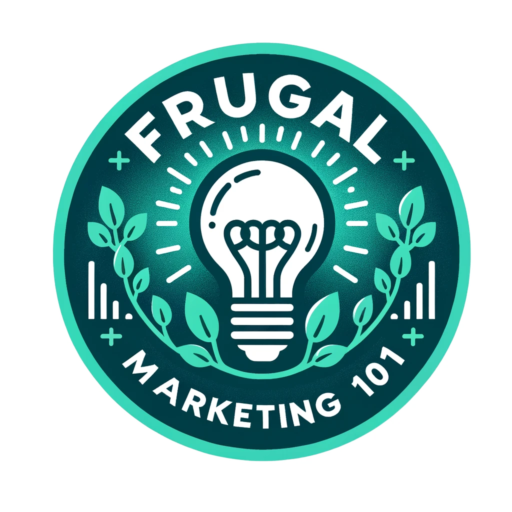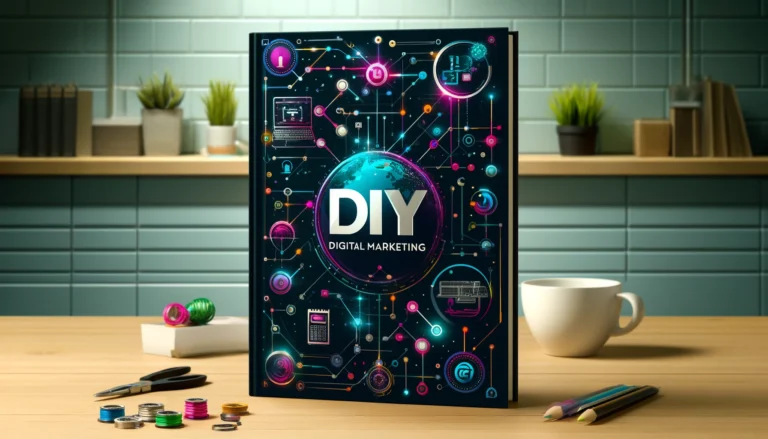Introduction
In the fast-paced and ever-evolving world of business, small enterprises and startups often find themselves grappling with the challenge of achieving impactful marketing results on a tight budget. This predicament has given rise to the concept of “Frugal Marketing,” where resourcefulness and strategic thinking take precedence over lavish expenditures. In this article, we will delve into the fundamentals of frugal marketing, shedding light on how small businesses and startups can leverage digital strategies for maximum impact without breaking the bank.
Understanding the Landscape
Before diving into the nuances of frugal marketing, it’s crucial to comprehend the landscape in which small businesses operate. Limited budgets pose significant challenges, but they also fuel creativity and innovation. Strategic marketing plays a pivotal role in propelling these businesses forward. With the advent of the digital era, the focus has shifted towards online platforms, presenting a myriad of opportunities for those with a discerning eye.
Core Principles of Frugal Marketing
Identifying Target Audience and Niche: In the world of frugal marketing, precision is key. Understanding your target audience and niche allows you to tailor your message more effectively. By honing in on a specific demographic, you can allocate resources more efficiently and increase the likelihood of resonating with potential customers.
Crafting a Unique Value Proposition
Your value proposition is the heart of your business. Clearly articulating what sets you apart from the competition is essential. Frugal marketing demands a razor-sharp focus on the unique value you bring to your customers. This not only enhances brand identity but also provides a solid foundation for all marketing efforts.
Establishing Clear Marketing Goals and Objectives
Clarity in your marketing goals is the roadmap to success. Whether it’s increasing brand awareness, driving website traffic, or boosting sales, having well-defined objectives ensures that every effort contributes to the overarching strategy. This clarity is especially critical when resources are scarce.
Conducting Competitor Analysis
Keeping a watchful eye on your competitors is a frugal marketer’s secret weapon. Learn from their successes and mistakes, identify gaps in the market, and refine your strategy accordingly. Utilize free tools and resources to stay informed about industry trends and competitor movements.
High-Impact Digital Marketing Tactics
Content Marketing
Creating Engaging and Shareable Content: Compelling content is the cornerstone of any successful digital marketing strategy. Craft blog posts, articles, and multimedia that not only showcase your expertise but also resonate with your audience. Shareability is key – encourage your audience to spread the word.
Leveraging Blogging and Guest Posting
Blogging remains a potent tool for organic traffic. Regularly publishing high-quality content on your website boosts SEO and positions your brand as an industry authority. Additionally, explore guest posting opportunities on relevant platforms to expand your reach.
Utilizing Social Media Platforms for Content Distribution
Social media is a cost-effective way to amplify your content. Choose platforms that align with your target audience, and be consistent in your messaging. Engage with your audience, participate in discussions, and leverage social media as a two-way communication channel.
Search Engine Optimization (SEO)
On-Page SEO Best Practices: Optimize your website for search engines by incorporating on-page SEO best practices. This includes optimizing meta tags, using relevant keywords, and creating a user-friendly website structure. Small changes can yield significant results in organic search rankings.
Off-Page SEO Strategies
Building backlinks from reputable sources and fostering online relationships contribute to off-page SEO. Engage with industry influencers, participate in forums, and seek opportunities for link building to enhance your website’s authority.
Keyword Research on a Budget
Invest time in comprehensive keyword research to identify terms relevant to your business. Leverage free or affordable keyword research tools to uncover high-impact keywords. Tailor your content and website optimization based on these keywords to improve search engine visibility.
Email Marketing
Building and Nurturing an Email List: Email marketing remains a powerful and cost-efficient way to connect with your audience. Build and nurture your email list by offering valuable content, exclusive promotions, or insightful newsletters. A well-curated email list can be a goldmine for your business.
Crafting Compelling Email Campaigns
Personalize your email campaigns to resonate with different segments of your audience. Craft compelling subject lines, engaging content, and clear calls-to-action. Monitor metrics like open rates and click-through rates to refine your approach over time.
Utilizing Automation Tools for Efficiency
Maximize efficiency by incorporating email automation tools. These tools enable you to schedule campaigns, segment your audience, and personalize content based on user behavior. Automation not only saves time but also ensures consistent and timely communication.
Social Media Marketing
Selecting the Right Platforms: Not all social media platforms are created equal. Identify the platforms most frequented by your target audience and focus your efforts there. Quality over quantity is the mantra – maintain an active presence on selected platforms rather than spreading thin across all.
Engaging with the Audience
Social media is a conversation. Engage with your audience by responding to comments, participating in discussions, and soliciting feedback. Authentic engagement builds trust and fosters a sense of community around your brand.
Running Cost-Effective Paid Campaigns
While paid campaigns often require investment, frugal marketers can still achieve results by optimizing targeting parameters. Experiment with low-budget, highly targeted campaigns to gauge effectiveness. Monitor key metrics and adjust your approach based on performance.
Cost-Efficient Tools and Resources
Analytics and Reporting
Leverage free analytics tools such as Google Analytics to track website performance, user behavior, and traffic sources. Understand your audience better and make data-driven decisions to refine your marketing strategy.
Graphic Design and Content Creation
Utilize cost-effective design tools like Canva or PicMonkey for creating visually appealing graphics and promotional materials. These user-friendly platforms offer professional-quality designs without the need for a dedicated graphic designer.
Social Media Management
Streamline your social media efforts with free or affordable social media management tools like Hootsuite or Buffer. Schedule posts, track engagement, and manage multiple platforms from a centralized dashboard.
Outsourcing and Collaborations
Utilizing Freelancers and Contractors
Tap into the gig economy by outsourcing tasks to freelancers and contractors. Platforms like Upwork and Fiverr provide access to a pool of talented individuals who can assist with content creation, graphic design, and other specialized tasks.
Partnering with Influencers and Industry Peers
Collaborate with influencers and industry peers to expand your reach without significant upfront costs. Identify individuals with a relevant audience and propose mutually beneficial partnerships. Influencer marketing can provide a significant boost to your brand visibility.
Case Studies
Real-Life Examples of Successful Frugal Marketing Campaigns:
Case Study 1: The Power of Organic Social Media Growth Explore how a small business achieved substantial growth through a focused approach to organic social media engagement. Learn about the strategies employed and the lessons garnered from building a loyal online community.
Case Study 2: SEO Triumph on a Budget Delve into the success story of a startup that harnessed the power of SEO to climb the search engine rankings without a hefty investment. Uncover the specific tactics implemented and the impact on the business’s online visibility.
Lessons Learned from Small Businesses with Limited Budgets
In the realm of frugal marketing, the journey of small businesses and startups offers valuable insights. From budget-friendly digital strategies to creative problem-solving, these enterprises exemplify the principles of doing more with less. By examining their experiences, aspiring entrepreneurs can glean practical lessons and apply them to their own marketing endeavors.
Measuring and Adapting
Establishing Key Performance Indicators (KPIs) is essential for evaluating the effectiveness of your marketing efforts. Metrics such as website traffic, conversion rates, and social media engagement provide valuable insights into what is working and what needs adjustment. A continual process of analysis and adaptation ensures that your frugal marketing strategy remains agile and responsive to changing market dynamics.
Conclusion
In the dynamic landscape of digital marketing, frugality is not a limitation but a catalyst for innovation. Small businesses and startups, armed with a clear understanding of their audience and a strategic approach to digital marketing, can achieve remarkable results on a shoestring budget. By embracing the core principles of frugal marketing, leveraging high-impact digital tactics, and utilizing cost-efficient tools, these enterprises can carve out a distinct and sustainable presence in the competitive online arena. As the digital landscape continues to evolve, the spirit of frugality will remain a guiding principle for those seeking to thrive in the world of business with limited resources.




